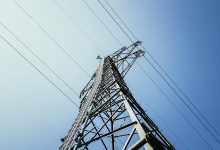South Australia is taking a novel approach to reducing peak demand on the grid, agreeing to fund a trial led by systems aggregator Enel X to tap into little-used back-up diesel generators to help clip demand peaks on the local grid.
The South Australia government says it is investing $2 million in the $4 million “backup boost program” that will look to clip the peaks – both in terms of demand and pricing – by encouraging businesses to switch on and use their back-up diesel generators, which are usually only used as an emergency supply in times of outages.
It may seem counter-intuitive, but the argument is that on-site diesel generators are likely little different in terms of emissions than the current fast-start gas or diesel generators favoured now, and in the past, and will likely deliver lower prices, and even a revenue stream, to the individual businesses and cut prices on the grid as a whole.
South Australia, like other states, is often victim to soaring prices at times of peak demand, particularly in the middle of extended heatwaves when nearly every household is turning on air-conditioning, and where supply is limited by the hot conditions.
In January, 2019, prices in renewables- dominated South Australia hit the market cap for extended periods. This year, it has been the turn of coal-dependent NSW to suffer prices at the market cap, in this case as a result of the heatwave and the bushfires.
“Enabling local businesses to fire up their backup generators and supply the electricity market will add a revenue stream for the businesses and deliver lower prices for everyone else,” the South Australia minister for energy Dan van Holst Pellekaan said in a statement.
“The plan to utilise backup generation that are virtually idle mirrors the Marshall Government’s decision to allow the State Government’s 276 megawatts of backup generation to operate in the electricity market.”
This is a reference to the back-up generators which will be leased to Infigen Energy and Nexif Energy, and transformed from diesel to gas, and which will allow those companies to provide sufficient “firm capacity” to build more wind and solar.
And, in something of a cheap shot to the previous Labor government, van Holst Pellekaan added: “I suspect many of these generators were purchased in the wake of the reliability problems that plagued South Australia’s electricity grid under the former Labor Government.”
Enel X, a demand side aggregator that is playing an increased role in energy markets, particularly in the frequency control and ancillary services areas, and in reserve supply, says it will look to source about 20MW of back up diesel capacity in the three year trial from around 40 small to medium sized businesses.
“Participating businesses will use their backup generator as a flexible asset in the energy market, says Jeff Renaud, the company head in Australia.
“This allows them to actively manage energy consumption and costs, earn revenue and maximise their investment in backup generation. Increasing use of these assets which can lay idle means better use of capital.
“The program will also contribute to electricity system reliability and provide network benefits by reducing excessive electricity demand during peak periods. This is done by switching from grid power to onsite backup generation. This brings wholesale market affordability benefits for all South Australian energy users.”
The government said the trial will cement South Australia as a world leader in addressing the challenges of a changing energy generation mix, and capturing the opportunities associated with a more active demand side.










